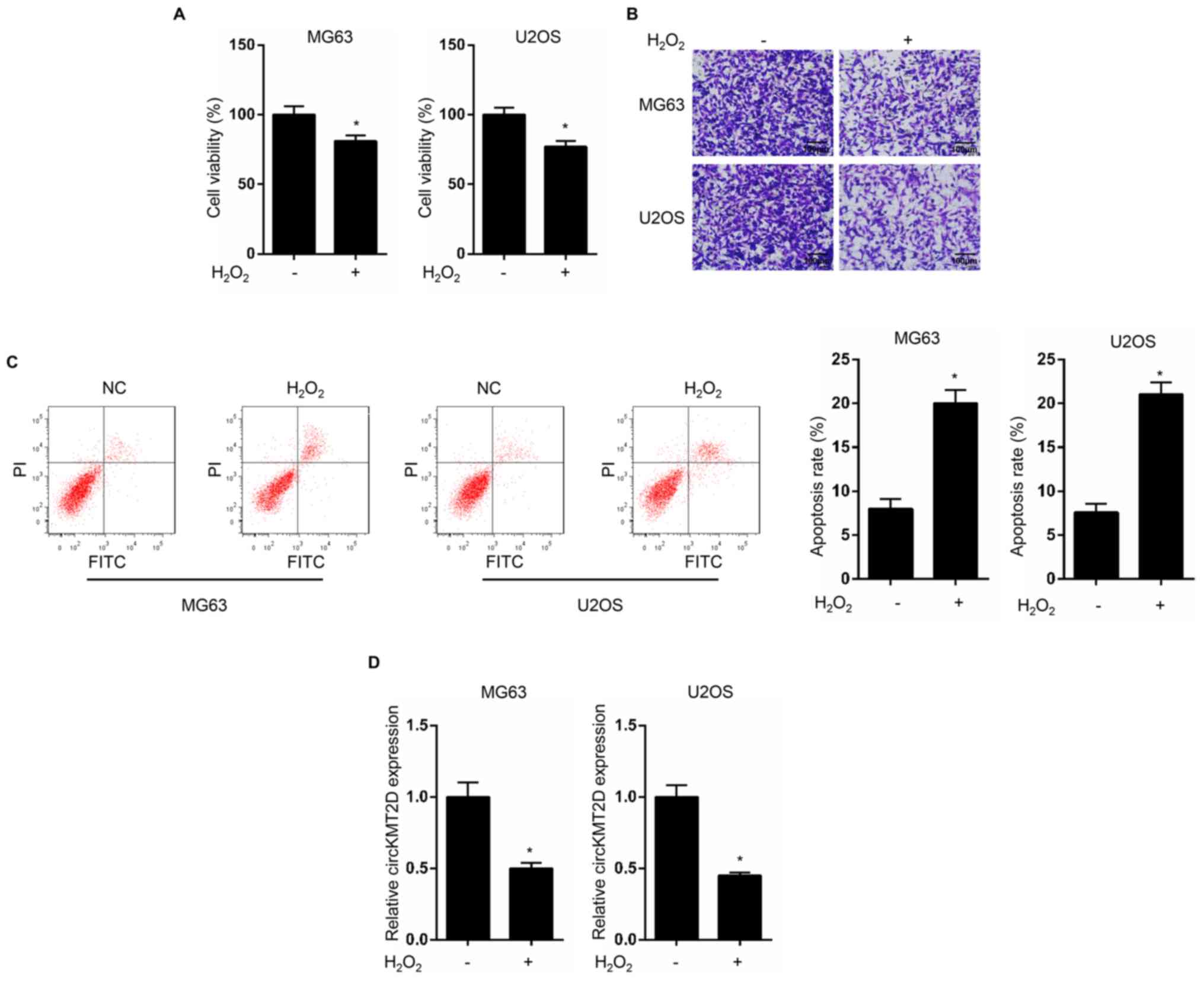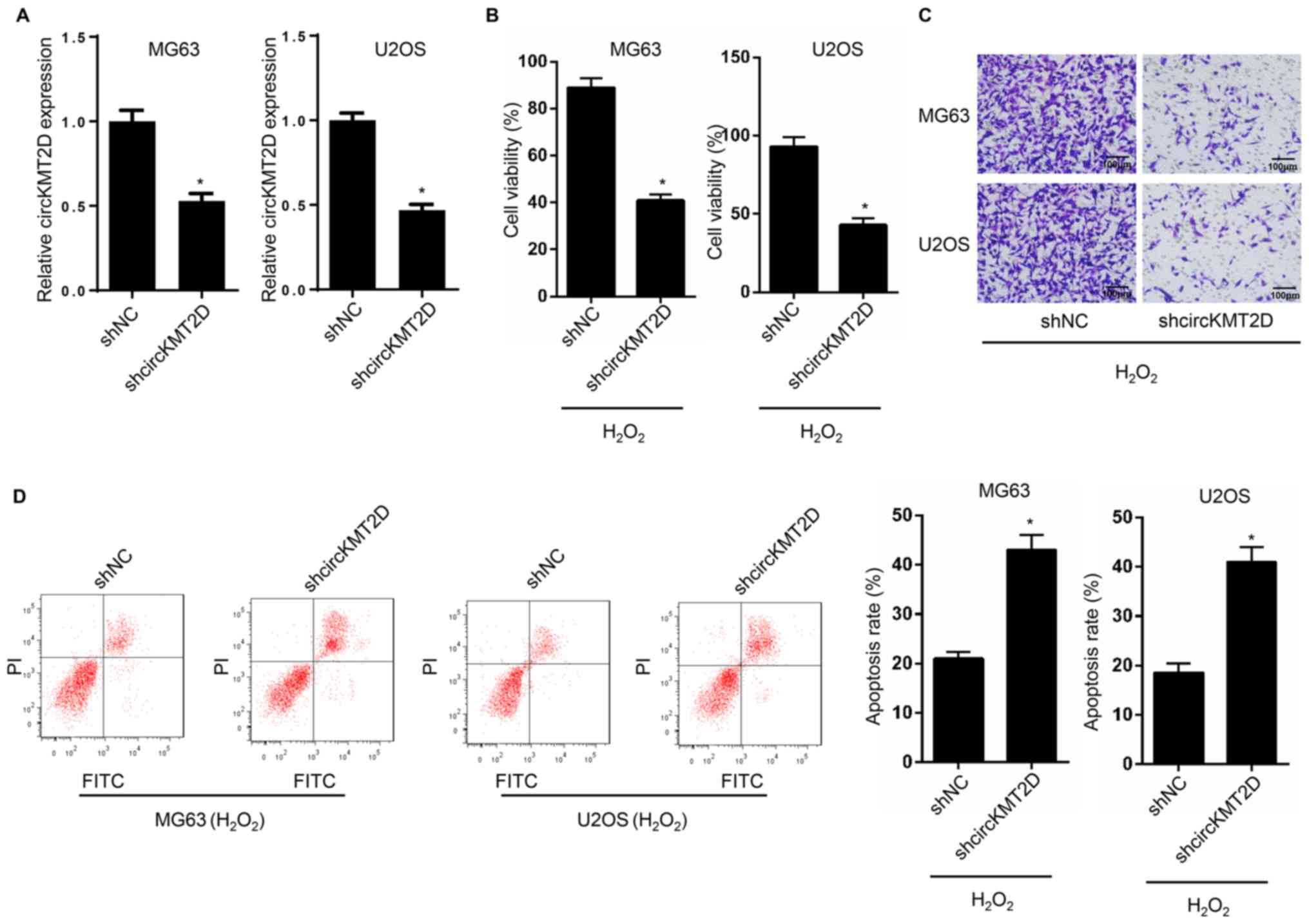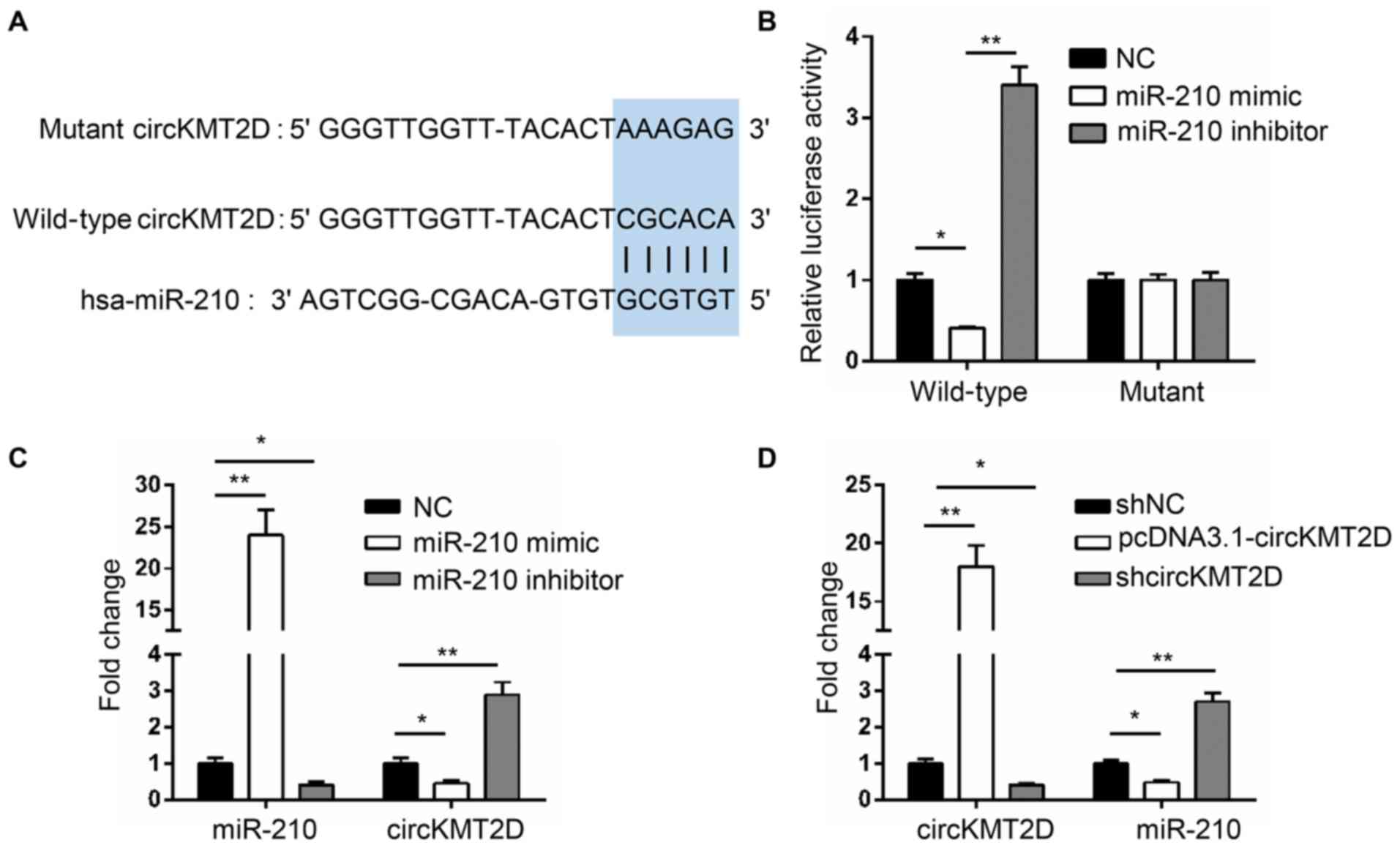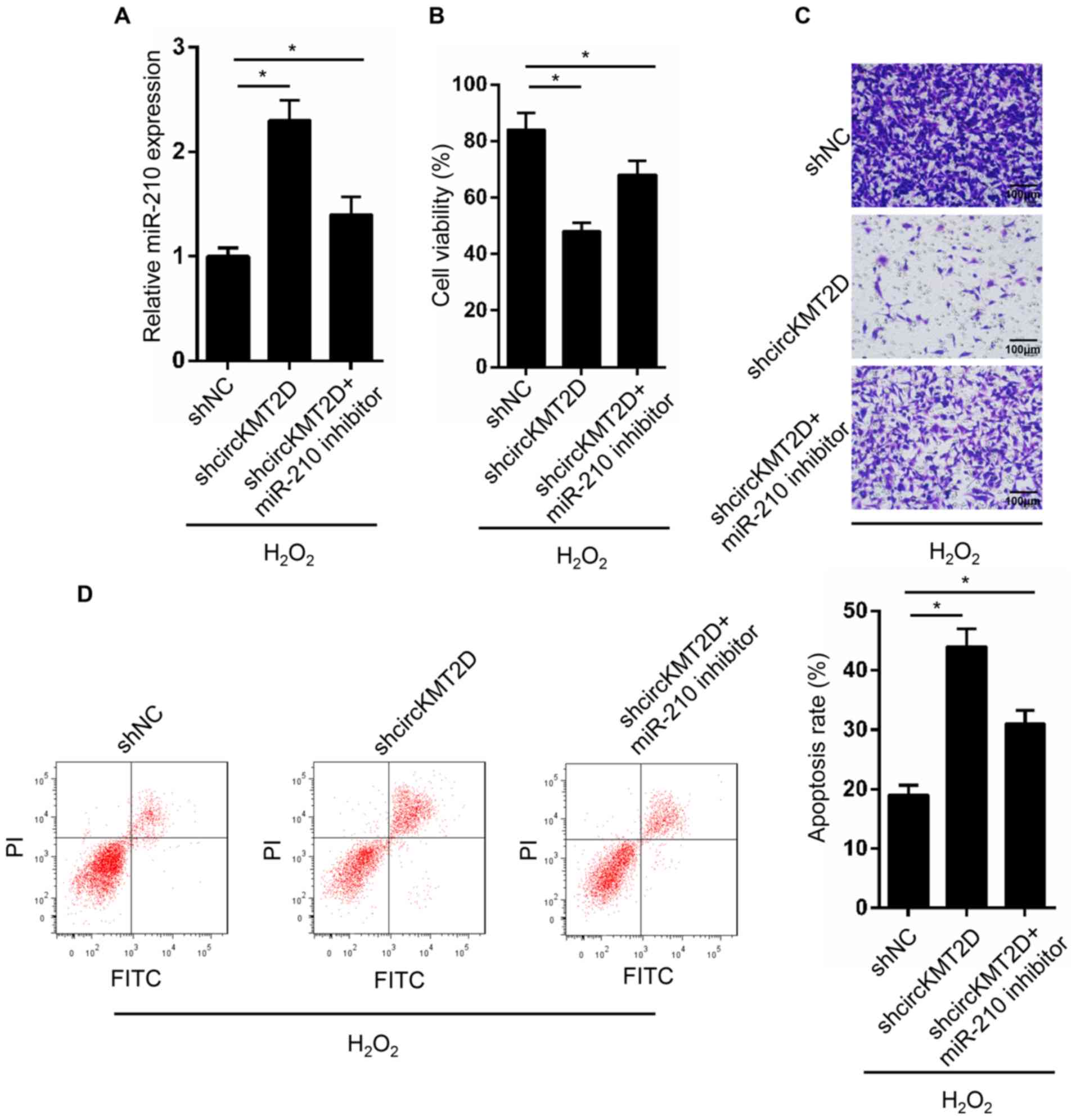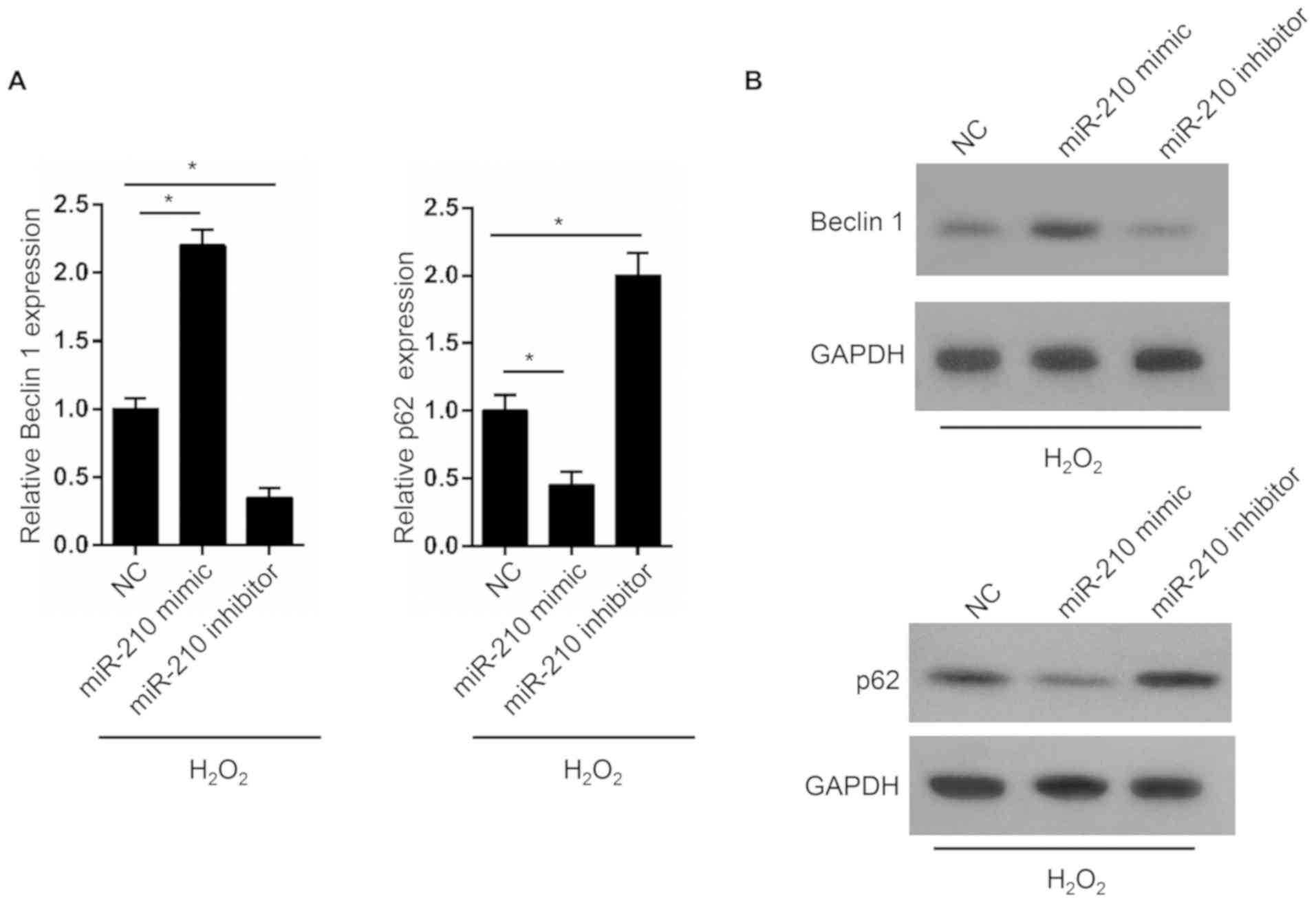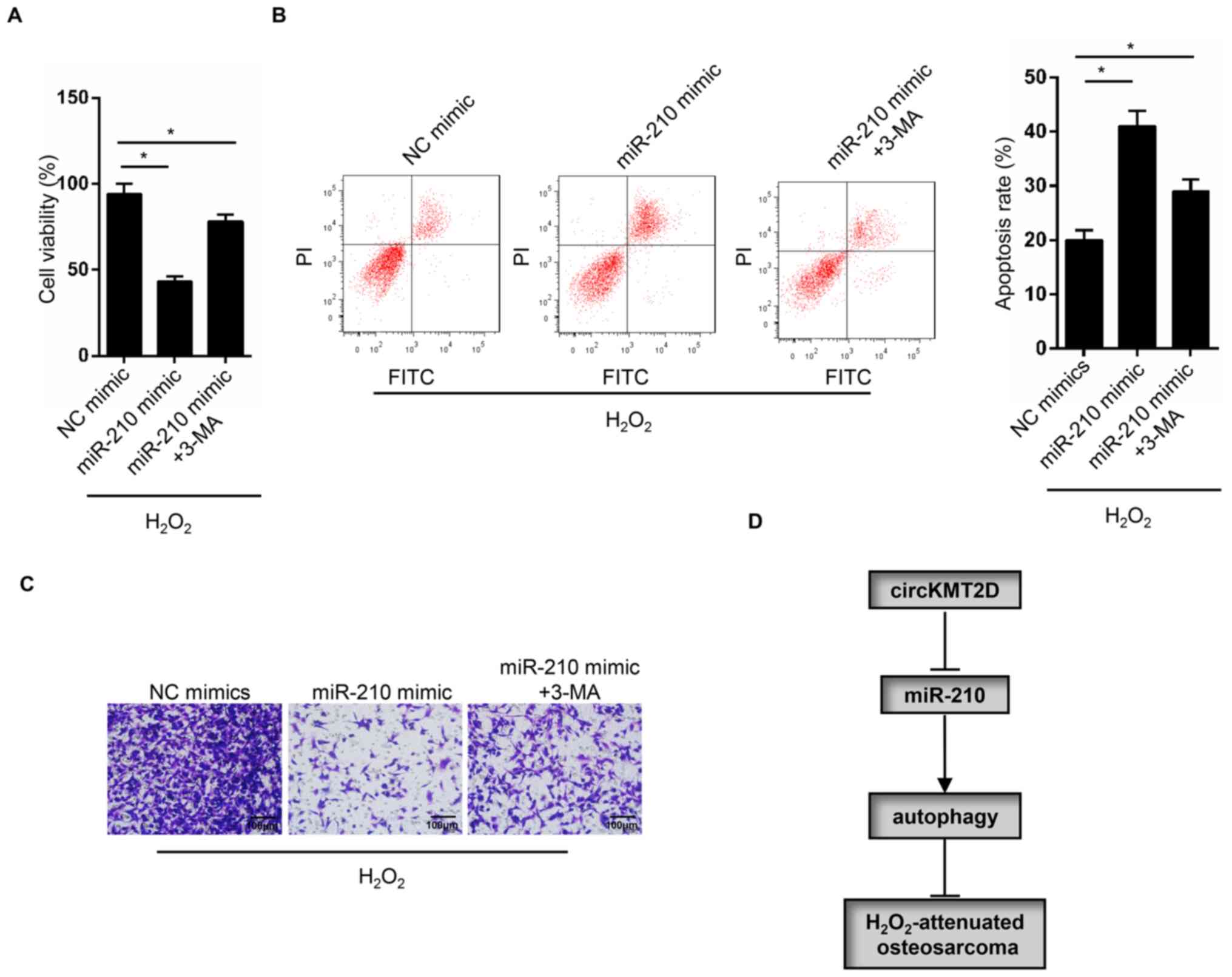|
1
|
Yang L, Ge D, Chen X, Qiu J, Yin Z, Zheng
S and Jiang C: FOXP4-AS1 participates in the development and
progression of osteosarcoma by downregulating LATS1 via binding to
LSD1 and EZH2. Biochem Biophys Res Commun. 502:493–500.
2018.PubMed/NCBI View Article : Google Scholar
|
|
2
|
Lin YH, Jewell BE, Gingold J, Lu L, Zhao
R, Wang LL and Lee DF: Osteosarcoma: Molecular Pathogenesis and
iPSC Modeling. Trends Mol Med. 23:737–755. 2017.PubMed/NCBI View Article : Google Scholar
|
|
3
|
Bashur L and Zhou G: Cancer stem cells in
osteosarcoma. Case Orthop J. 10:38–42. 2013.PubMed/NCBI
|
|
4
|
Wang Z, Li B, Ren Y and Ye Z: T-cell-based
immunotherapy for osteosarcoma: Challenges and opportunities. Front
Immunol. 7(353)2016.PubMed/NCBI View Article : Google Scholar
|
|
5
|
He C, Sun J, Liu C, Jiang Y and Hao Y:
Elevated H3K27me3 levels sensitize osteosarcoma to cisplatin. Clin
Epigenetics. 11(8)2019.PubMed/NCBI View Article : Google Scholar
|
|
6
|
Fridovich I: Oxygen free radicals and
tissue damage: Chairman's introduction. Ciba Found Symp. 1–4.
1978.PubMed/NCBI
|
|
7
|
Dong K, Yang C, Yan Y, Wang P, Sun Y, Wang
K, Lu T, Chen Q, Zhang Y, Xing J and Dong Y: Investigation of the
intracellular oxidative stress amplification, safety and anti-tumor
effect of a kind of novel redox-responsive micelle. J Mater Chem B.
6:1105–1117. 2018.PubMed/NCBI View Article : Google Scholar
|
|
8
|
Hahn HJ, Kim KB, An IS, Ahn KJ and Han HJ:
Protective effects of rosmarinic acid against hydrogen
peroxideinduced cellular senescence and the inflammatory response
in normal human dermal fibroblasts. Mol Med Rep. 16:9763–9769.
2017.PubMed/NCBI View Article : Google Scholar
|
|
9
|
Wang Y, Wang W and Qiu E: Protection of
oxidative stress induced apoptosis in osteosarcoma cells by
dihydromyricetin through down-regulation of caspase activation and
up-regulation of BcL-2. Saudi J Biol Sci. 24:837–842.
2017.PubMed/NCBI View Article : Google Scholar
|
|
10
|
Pei W, Tao L, Zhang LW, Zhang S, Cao J,
Jiao Y, Tong J and Nie J: Circular RNA profiles in mouse lung
tissue induced by radon. Environ Health Prev Med.
22(36)2017.PubMed/NCBI View Article : Google Scholar
|
|
11
|
Zhang HD, Jiang LH, Sun DW, Hou JC and Ji
ZL: CircRNA: A novel type of biomarker for cancer. Breast Cancer.
25:1–7. 2018.PubMed/NCBI View Article : Google Scholar
|
|
12
|
Barrett SP and Salzman J: Circular RNAs:
Analysis, expression and potential functions. Development.
143:1838–1847. 2016.PubMed/NCBI View Article : Google Scholar
|
|
13
|
Salmena L, Poliseno L, Tay Y, Kats L and
Pandolfi PP: A ceRNA hypothesis: The Rosetta Stone of a hidden RNA
language? Cell. 146:353–358. 2011.PubMed/NCBI View Article : Google Scholar
|
|
14
|
Chen L, Zhang S, Wu J, Cui J, Zhong L,
Zeng L and Ge S: circRNA_100290 plays a role in oral cancer by
functioning as a sponge of the miR-29 family. Oncogene.
36:4551–4561. 2017.PubMed/NCBI View Article : Google Scholar
|
|
15
|
Wu Z, Shi W and Jiang C: Overexpressing
circular RNA hsa_circ_0002052 impairs osteosarcoma progression via
inhibiting Wnt/β-catenin pathway by regulating miR-1205/APC2 axis.
Biochem Biophys Res Commun. 502:465–471. 2018.PubMed/NCBI View Article : Google Scholar
|
|
16
|
Huang L, Chen M, Pan J and Yu W: Circular
RNA circNASP modulates the malignant behaviors in osteosarcoma via
miR-1253/FOXF1 pathway. Biochem Biophys Res Commun. 500:511–517.
2018.PubMed/NCBI View Article : Google Scholar
|
|
17
|
Li Z, Xuan W, Huang L, Chen N, Hou Z, Lu
B, Wen C and Huang S: Claudin 10 acts as a novel biomarker for the
prognosis of patients with ovarian cancer. Oncol Lett. 20:373–381.
2020.PubMed/NCBI View Article : Google Scholar
|
|
18
|
Yang X, Shi L, Yi C, Yang Y, Chang L and
Song D: MiR-210-3p inhibits the tumor growth and metastasis of
bladder cancer via targeting fibroblast growth factor receptor-like
1. Am J Cancer Res. 7:1738–1753. 2017.PubMed/NCBI
|
|
19
|
Liu S, Jiang T, Zhong Y and Yu Y: miR-210
inhibits cell migration and invasion by targeting the brain-derived
neurotrophic factor in glioblastoma. J Cell Biochem: Feb 11, 2019
(Epub ahead of print).
|
|
20
|
Tan W, Lim SG and Tan TM: Up-regulation of
microRNA-210 inhibits proliferation of hepatocellular carcinoma
cells by targeting YES1. World J Gastroenterol. 21:13030–13041.
2015.PubMed/NCBI View Article : Google Scholar
|
|
21
|
Gulino R, Forte S, Parenti R, Memeo L and
Gulisano M: MicroRNA and pediatric tumors: Future perspectives.
Acta Histochem. 117:339–354. 2015.PubMed/NCBI View Article : Google Scholar
|
|
22
|
Zhao XH, Xu ZR, Zhang Q and Yang YM:
Simvastatin protects human osteosarcoma cells from oxidative
stress-induced apoptosis through mitochondrial-mediated signaling.
Mol Med Rep. 5:483–488. 2012.PubMed/NCBI View Article : Google Scholar
|
|
23
|
Livak KJ and Schmittgen TD: Analysis of
relative gene expression data using real-time quantitative PCR and
the 2(-Delta Delta C(T)) method. Methods. 25:402–408.
2001.PubMed/NCBI View Article : Google Scholar
|
|
24
|
Zhang Y, Wang F, Li M, Yu Z, Qi R, Ding J,
Zhang Z and Chen X: Self-stabilized hyaluronate nanogel for
intracellular codelivery of doxorubicin and cisplatin to
osteosarcoma. Adv Sci (Weinh). 5(1700821)2018.PubMed/NCBI View Article : Google Scholar
|
|
25
|
Li S, Zhang T, Xu W, Ding J, Yin F, Xu J,
Sun W, Wang H, Sun M, Cai Z and Hua Y: Sarcoma-targeting
peptide-decorated polypeptide nanogel intracellularly delivers
shikonin for upregulated osteosarcoma necroptosis and diminished
pulmonary metastasis. Theranostics. 8:1361–1375. 2018.PubMed/NCBI View Article : Google Scholar
|
|
26
|
Durfee RA, Mohammed M and Luu HH: Review
of osteosarcoma and current management. Rheumatol Ther. 3:221–243.
2016.PubMed/NCBI View Article : Google Scholar
|
|
27
|
Zhang Y, Cai L, Li D, Lao YH, Liu D, Li M,
Ding J and Chen X: Tumor microenvironment-responsive
hyaluronate-calcium carbonate hybrid nanoparticle enables effective
chemotherapy for primary and advanced osteosarcomas. Nano Res.
11:4806–4822. 2018.
|
|
28
|
Wu PF, Long LH, Zeng JH, Guan XL, Zhou J,
Jin Y, Ni L, Wang F, Chen JG and Xie N: Protection of L-methionine
against H2O2-induced oxidative damage in
mitochondria. Food Chem Toxicol. 50:2729–2735. 2012.
|
|
29
|
Glasauer A and Chandel NS: Targeting
antioxidants for cancer therapy. Biochem Pharmacol. 92:90–101.
2014.PubMed/NCBI View Article : Google Scholar
|
|
30
|
Lennicke C, Rahn J, Lichtenfels R,
Wessjohann LA and Seliger B: Hydrogen peroxide-production, fate and
role in redox signaling of tumor cells. Cell Commun Signal.
13(39)2015.PubMed/NCBI View Article : Google Scholar
|
|
31
|
Park WH: Hydrogen peroxide inhibits the
growth of lung cancer cells via the induction of cell death and
G1phase arrest. Oncol Rep. 40:1787–1794. 2018.PubMed/NCBI View Article : Google Scholar
|
|
32
|
Ogawa Y, Takahashi T, Kobayashi T, Kariya
S, Nishioka A, Mizobuchi H, Noguchi M, Hamasato S, Tani T, Seguchi
H, et al: Mechanism of hydrogen peroxide-induced apoptosis of the
human osteosarcoma cell line HS-Os-1. Int J Mol Med. 12:459–463.
2003.PubMed/NCBI
|
|
33
|
Zhang H, Wang G, Ding C, Liu P, Wang R,
Ding W, Tong D, Wu D, Li C, Wei Q, et al: Increased circular RNA
UBAP2 acts as a sponge of miR-143 to promote osteosarcoma
progression. Oncotarget. 8:61687–61697. 2017.PubMed/NCBI View Article : Google Scholar
|
|
34
|
Liu X, Zhong Y, Li J and Shan A: Circular
RNA circ-NT5C2 acts as an oncogene in osteosarcoma proliferation
and metastasis through targeting miR-448. Oncotarget.
8:114829–114838. 2017.PubMed/NCBI View Article : Google Scholar
|
|
35
|
Liu H, Li P, Chen L, Jian C, Li Z and Yu
A: MicroRNAs as a novel class of diagnostic biomarkers for the
detection of osteosarcoma: A meta-analysis. OncoTargets Ther.
10:5229–5236. 2017.PubMed/NCBI View Article : Google Scholar
|
|
36
|
Fujiwara T, Uotani K, Yoshida A, Morita T,
Nezu Y, Kobayashi E, Yoshida A, Uehara T, Omori T, Sugiu K, et al:
Clinical significance of circulating miR-25-3p as a novel
diagnostic and prognostic biomarker in osteosarcoma. Oncotarget.
8:33375–33392. 2017.PubMed/NCBI View Article : Google Scholar
|
|
37
|
Fan H, Lu S, Wang S and Zhang S:
Identification of critical genes associated with human osteosarcoma
metastasis based on integrated gene expression profiling. Mol Med
Rep. 20:915–930. 2019.PubMed/NCBI View Article : Google Scholar
|
|
38
|
Zhang Y, Yan J, Wang L, Dai H, Li N, Hu W
and Cai H: HIF-1α promotes breast cancer cell MCF-7 proliferation
and invasion through regulating miR-210. Cancer Biother Radiopharm.
32:297–301. 2017.PubMed/NCBI View Article : Google Scholar
|
|
39
|
Wang Z, Yin B, Wang B, Ma Z, Liu W and Lv
G: MicroRNA-210 promotes proliferation and invasion of peripheral
nerve sheath tumor cells targeting EFNA3. Oncol Res. 21:145–154.
2013.PubMed/NCBI View Article : Google Scholar
|
|
40
|
Redova M, Poprach A, Besse A, Iliev R,
Nekvindova J, Lakomy R, Radova L, Svoboda M, Dolezel J, Vyzula R
and Slaby O: MiR-210 expression in tumor tissue and in vitro
effects of its silencing in renal cell carcinoma. Tumour Biol.
34:481–491. 2013.PubMed/NCBI View Article : Google Scholar
|
|
41
|
Cai H, Lin L, Cai H, Tang M and Wang Z:
Prognostic evaluation of microRNA-210 expression in pediatric
osteosarcoma. Med Oncol. 30(499)2013.PubMed/NCBI View Article : Google Scholar
|
|
42
|
Liu X, Zhang C, Wang C, Sun J, Wang D,
Zhao Y and Xu X: miR-210 promotes human osteosarcoma cell migration
and invasion by targeting FGFRL1. Oncol Lett. 16:2229–2236.
2018.PubMed/NCBI View Article : Google Scholar
|
|
43
|
Zhang H, Mai Q and Chen J: MicroRNA-210 is
increased and it is required for dedifferentiation of osteosarcoma
cell line. Cell Biol Int. 41:267–275. 2017.PubMed/NCBI View Article : Google Scholar
|
|
44
|
Ebner P, Poetsch I, Deszcz L, Hoffmann T,
Zuber J and Ikeda F: The IAP family member BRUCE regulates
autophagosome-lysosome fusion. Nat Commun. 9(599)2018.PubMed/NCBI View Article : Google Scholar
|
|
45
|
Ding WX, Ni HM, Gao W, Hou YF, Melan MA,
Chen X, Stolz DB, Shao ZM and Yin XM: Differential effects of
endoplasmic reticulum stress-induced autophagy on cell survival. J
Biol Chem. 282:4702–4710. 2007.PubMed/NCBI View Article : Google Scholar
|
|
46
|
Kim EH, Sohn S, Kwon HJ, Kim SU, Kim MJ,
Lee SJ and Choi KS: Sodium selenite induces superoxide-mediated
mitochondrial damage and subsequent autophagic cell death in
malignant glioma cells. Cancer Res. 67:6314–6324. 2007.PubMed/NCBI View Article : Google Scholar
|
|
47
|
Terman A, Gustafsson B and Brunk UT:
Autophagy, organelles and ageing. J Pathol. 211:134–143.
2007.PubMed/NCBI View Article : Google Scholar
|
|
48
|
Li L, Li Y, Zhao J, Fan S, Wang L and Li
X: CX-5461 induces autophagy and inhibits tumor growth via
mammalian target of rapamycin-related signaling pathways in
osteosarcoma. Onco Targets Ther. 9:5985–5997. 2016.PubMed/NCBI View Article : Google Scholar
|
|
49
|
Ranjan A and Srivastava SK: Penfluridol
suppresses pancreatic tumor growth by autophagy-mediated apoptosis.
Sci Rep. 6(26165)2016.PubMed/NCBI View Article : Google Scholar
|
|
50
|
Li C, Xu H, Chen X, Chen J, Li X, Qiao G,
Tian Y, Yuan R, Su S, Liu X and Lin X: Aqueous extract of clove
inhibits tumor growth by inducing autophagy through AMPK/ULK
pathway. Phytother Res. 33:1794–1804. 2019.PubMed/NCBI View Article : Google Scholar
|
|
51
|
Xu J, Wang H, Hu Y, Zhang YS, Wen L, Yin
F, Wang Z, Zhang Y, Li S, Miao Y, et al: Inhibition of CaMKIIα
activity enhances antitumor effect of fullerene C60 nanocrystals by
suppression of autophagic degradation. Adv Sci (Weinh).
6(1801233)2019.PubMed/NCBI View Article : Google Scholar
|
|
52
|
Zhou W, Yue C, Deng J, Hu R, Xu J, Feng L,
Lan Q, Zhang W, Ji D, Wu J, et al: Autophagic protein Beclin 1
serves as an independent positive prognostic biomarker for
non-small cell lung cancer. PLoS One. 8(e80338)2013.PubMed/NCBI View Article : Google Scholar
|
|
53
|
Xu R, Liu S, Chen H and Lao L:
MicroRNA-30a downregulation contributes to chemoresistance of
osteosarcoma cells through activating Beclin-1-mediated autophagy.
Oncol Rep. 35:1757–1763. 2016.PubMed/NCBI View Article : Google Scholar
|
|
54
|
Mathew R, Karp CM, Beaudoin B, Vuong N,
Chen G, Chen HY, Bray K, Reddy A, Bhanot G, Gelinas C, et al:
Autophagy suppresses tumorigenesis through elimination of p62.
Cell. 137:1062–1075. 2009.PubMed/NCBI View Article : Google Scholar
|
|
55
|
Lan SH, Wu SY, Zuchini R, Lin XZ, Su IJ,
Tsai TF, Lin YJ, Wu CT and Liu HS: Autophagy suppresses
tumorigenesis of hepatitis B virus-associated hepatocellular
carcinoma through degradation of microRNA-224. Hepatology.
59:505–517. 2014.PubMed/NCBI View Article : Google Scholar
|
|
56
|
Cheong H, Wu J, Gonzales LK, Guttentag SH,
Thompson CB and Lindsten T: Analysis of a lung defect in
autophagy-deficient mouse strains. Autophagy. 10:45–56.
2014.PubMed/NCBI View Article : Google Scholar
|
|
57
|
Graziano AC, Cardile V, Avola R, Vicario
N, Parenti C, Salvatorelli L, Magro G and Parenti R: Wilms' tumor
gene 1 silencing inhibits proliferation of human osteosarcoma MG-63
cell line by cell cycle arrest and apoptosis activation.
Oncotarget. 8:13917–13931. 2017.PubMed/NCBI View Article : Google Scholar
|
|
58
|
Zhang J, Yu XH, Yan YG, Wang C and Wang
WJ: PI3K/Akt signaling in osteosarcoma. Clin Chim Acta.
444:182–192. 2015.PubMed/NCBI View Article : Google Scholar
|
|
59
|
Perry JA, Kiezun A, Tonzi P, Van Allen EM,
Carter SL, Baca SC, Cowley GS, Bhatt AS, Rheinbay E, Pedamallu CS,
et al: Complementary genomic approaches highlight the PI3K/mTOR
pathway as a common vulnerability in osteosarcoma. Proc Natl Acad
Sci USA. 111:E5564–E5573. 2014.PubMed/NCBI View Article : Google Scholar
|
|
60
|
Wang L, Tang B, Han H, Mao D, Chen J, Zeng
Y and Xiong M: miR-155 affects osteosarcoma MG-63 cell autophagy
induced by adriamycin through regulating PTEN-PI3K/AKT/mTOR
signaling pathway. Cancer Biother Radiopharm. 33:32–38.
2018.PubMed/NCBI View Article : Google Scholar
|
|
61
|
Yue Z, Guan X, Chao R, Huang C, Li D, Yang
P, Liu S, Hasegawa T, Guo J and Li M: Diallyl disulfide induces
apoptosis and autophagy in human osteosarcoma MG-63 cells through
the PI3K/Akt/mTOR pathway. Molecules. 24(2665)2019.PubMed/NCBI View Article : Google Scholar
|















